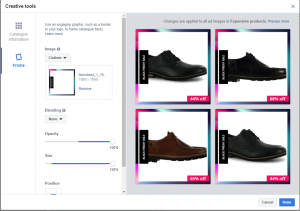Warning: This post is about to get meta
The terms “Title” and “Meta Description” are often thrown around in articles about search engine optimization (SEO), many of which give advice on how to use these “tags” to take your strategy to the next level. But what are these tags exactly, and where are they? This post will tell you where to find these often overlooked pieces of your website, and how to optimize them to help your site thrive via meta tag SEO.
The Title and Meta Description live within the code of the site (in the “head” specifically, for you HTML-savvy readers), and are only visible in some situations. The Title is usually at the top of your browser when you go to a site, or in the tab if you’re using tabbed browsing. It looks like this:

The Title also appears in search results, which is where you can find the Meta Description as well, as seen here:

Both the Title and Meta Description are used by search engines such as Google to determine how relevant a site is for each search query, and to inform users about the general topic of each page—which means they are customer facing and should not only be optimized for search engines, but written to attract customers as well. That said, let’s get into the limits of each tag, and how to optimize them to please robots and humans alike.
Creating strong Titles
The Title tag is the title of each page, and should give an idea of what the page is about. Much like the title of a book, it can make the difference between a searcher wanting to learn more, or passing over your site and clicking on a competitor. Ideally, it contains a descriptive keyword near the beginning to give search engines what they need, followed by descriptive text to help humans choose your site over other search results. The catch is that the Title is limited to under 60 characters including spaces, so you have to get your point across in just a few words.
For example, let’s assume a site is about organic pool cleaning services. The SEO specialist for this site has done some keyword research, and found that “green pool cleaning” is the best keyword for the services page. With that in mind, a good Title could be:
Green Pool Cleaning Services | ABC Organic Pool Cleaners
This Title is under 60 characters, has the keyword up front, describes the page, and in this case, lets any potential customers know the name of the company providing the services.
Note that there are many ways to structure a Title. Some people like to use dashes instead of pipes (|), while others prefer something closer to complete sentences to use as much Title real estate as possible. Ultimately, it comes down to a formatting preference. As long as a Title has a keyword, is descriptive, and is under 60 characters, Google doesn’t care about the specifics.
Crafting meaningful Meta Descriptions
To start, the Meta Description doesn’t help your site rank. I repeat: it does not help your site rank. So why focus on it at all? While the Meta Description isn’t a ranking factor any more (due to previous acts of keyword stuffing and over optimization), it’s still customer facing and can be a great way to help your site stand out. Limited to 160 characters including spaces, the Meta Description is like a brief product description, and gives potential customers a reason to click through to your site.
Using the earlier example of ABC Organic Pools, a good Meta Description for its services page could be:
Green pool cleaning services in your area from ABC Organic Pool Cleaners. We service salt water, natural and chlorine pools with competitive rates. Learn more.
At 158 characters, this description keeps the keyword towards the beginning, much like the Title. This is valuable because Google bolds keywords in the Meta Description that match a customer’s query. For example, if a user searches for “Yesler B2B marketing agency” in Google or Bing, the search engine helpfully highlights the keywords to show how relevant the result is:

Small factors like this can help searchers find the right webpage to answer their query, so making sure your page has only what they need and also showcases that information can increase click-through to your site. This can help conversion as well, as searchers clicking through know what they’re getting into before they land on the page.
If the Meta Description is left blank or is very short (under 130 characters), some search engines may replace it with content from the page. Google in particular is prone to this, and while on the surface it seems like a good idea, content chosen by a search engine generally isn’t helpful to users. It’s always better to present a direct, optimized Meta Description to potential customers instead of leaving it to an algorithm.
Adding Titles and Meta Descriptions to your site
For WordPress sites with the Yoast SEO plugin, it’s easy to fill in the Title and Meta Description. Other content management systems such as Joomla or OpenCms have their own systems for editing or adding SEO information, dependent on what version you’re using. Thankfully, there are many informative how-to videos on YouTube covering this topic, so once you have the knowledge, you should be good to go.
It might be tempting at this point to go on an optimization rampage, editing all of your Titles and Meta Descriptions wholesale. Ensuring that these tags are updated and make sense is important for keeping your site optimized, but it’s also a good idea to keep an eye on the whole picture. Ask yourself what the overall strategy is, from choosing keywords to implementing them on the page, and go from there.
In the end, content is still king for search engines, especially Google, and no amount of meta tag SEO can bring success by itself. It’s imperative that the content is supported by the keyword strategy on every page. The content, Title and Meta Description are all integral parts of any SEO optimization plan. Each has its role, but they work best when they work together.
Digital & Social Articles on Business 2 Community(12)






